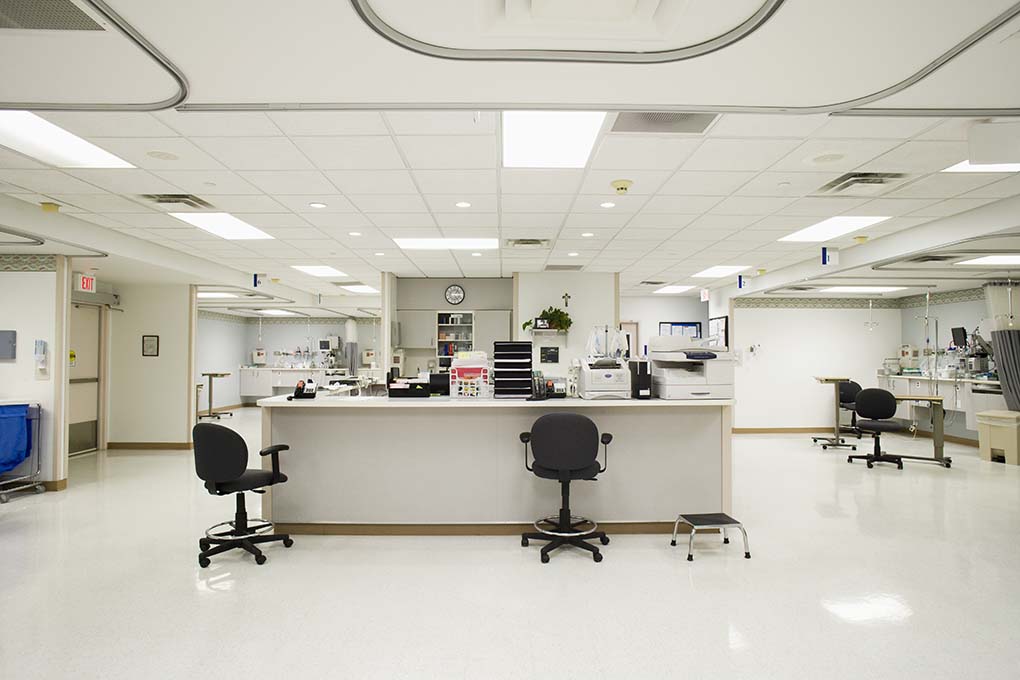Healthcare spaces – such hospitals, general practices, dental surgeries and aged care facilities – have a strict set of requirements when it comes to floors. Hospital flooring in particular needs to be of a very high quality, must be durable and provide a superior level of hygiene control. Let’s take a more in-depth look at some of the things you need to know about hospital flooring.

There are a few key requirements of hospital flooring that will dictate which type you choose. These include:
Hospital flooring needs to provide an excellent level of hygiene control. This means choosing a waterproof material in order to prevent bacteria growth and mould or mildew spreading. Keeping the air clean is similarly important, with the best flooring solutions being those that are PVC-VOC free as well as those that won’t trap particles of skin, dust, dirt or other pollutants (like carpet will).
Good foot traction is a crucial element of hospital flooring which will ensure they are as sturdy as possible. Any area of a healthcare setting that could potentially get wet should be treated to minimise the chance of slippage.
Visibility is a key issue in hospital environments for two reasons. Firstly to ensure that cleaning and maintenance is as easy as possible, and secondly to help define obstacles or potential hazards. Bright, colourful and variegated floors are your best option.

Overall, vinyl is the most suitable choice for hospital flooring. Vinyl is one of the most reliable and versatile options for flooring across a number of different industry sectors, and in healthcare, it is the optimal choice for hygiene, traction and visibility.
There are two main types of vinyl flooring:
Sheet Vinyl
Sheet vinyl is made from coloured vinyl chips which are ‘welded’ together under pressure and heat. It stored as large ‘sheets’ and rolled out on top of a surface then heat-welded into place. This process makes sure that no dirt or residue can be trapped under the surface, ensuring the surface is stable and residue will not disrupt its integrity.
Plank Vinyl
Plank vinyl is manufactured the same way as sheet vinyl, only it is cut into strips, or ‘planks’ to be laid. Depending on the desired style and finish, plank vinyl can have a photographic layer that can be added underneath the surface to mimic wood, tiles and other materials. Modern vinyl finishes are very convincing. Plank vinyl is cheaper to install that sheet vinyl and is an excellent option for hallways, surgery rooms and GP offices.
Aussie Flooring Insights has had many years’ experience in completing installations in new and existing major healthcare facilities, especially hospital flooring solutions.
We understand the need for effective project management and thorough product knowledge to deliver the best possible outcomes for this segment. Importantly, we are able to be involved from the concept stage to assist designers and operators specify the best flooring systems for the required usage.
For professional advice on hospital flooring, talk to the experts at Aussie Flooring Insights. We have the skills, knowledge and experience to ensure that your facility has quality flooring that your patients, guests and staff can rely on.